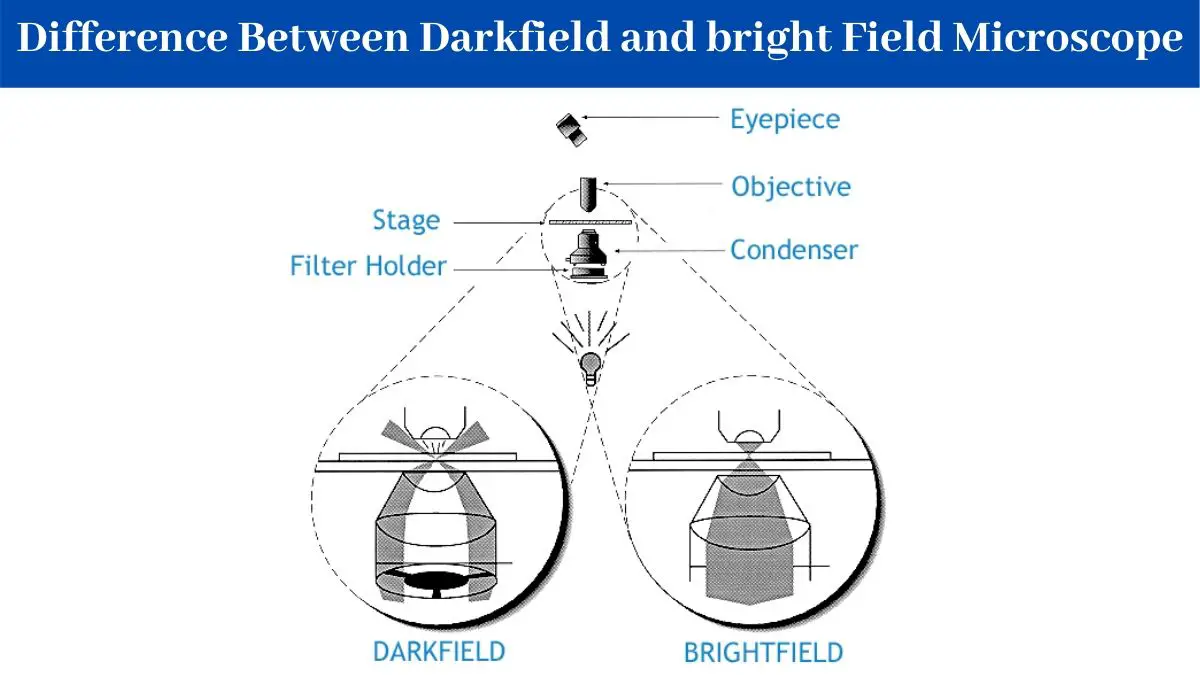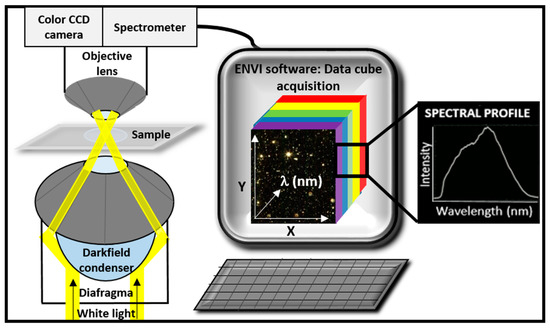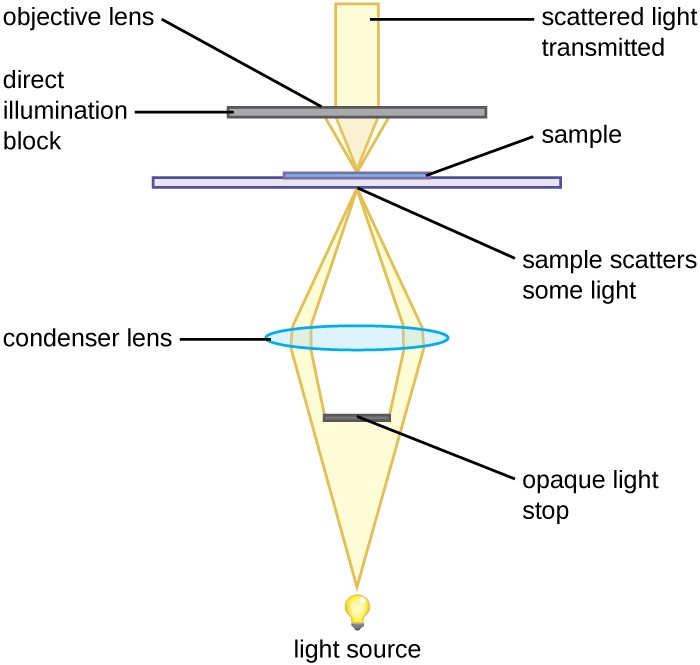Dark-field Microscopy Depends on Which Characteristic of Light
Scientists generate dark-field images by fitting standard microscopes with often costly components. This is the result of a modification made to brightfield microscopy.
Microscopy The Different Instruments Concepts Variants Types Diagram Methodology Profile Of Microbial Stains Identification Of Microorganisms Pharmaceutical Microbiology
Applications that involve physical methods such as microscopy and spectroscopy15 The scattered light of metal NPs can be clearly observed by using a dark-field microscopy.
. Dark-field microscopy is best suited for illuminating unstained materials which seem brilliantly lighted against a dark backdrop. Whereas bright field BF lighting is a more common application for most inspections dark field DF lighting has a. In essence dark-field microscopy emphasizes high spatial frequency components associated with small features in the specimen morphology and in some imaging scenarios can provide resolution beyond the.
Scattering In dark field microscopy the scattering of light allows objects smaller than the wavelength to be viewed as bright images on a dark field. The use of indirect light allows visualization of organisms too small to be seen under direct-light microscopy. The specimen absorbs light and appears dark.
Instead of coming up through the specimen the light is reflected by particles on the slide. As a result the field around the specimen is generally dark. Everything is visible regardless of color usually bright white against a dark background.
The whole scattering of light depends on the light source. To maximize the scattered light-gathering power of. The dark field microscope it is a special optical instrument used in certain laboratories.
Therefore they are 6used as optical indexes for both sensing 8 and imaging914 Gram-negative bacteria such as Pseudomonas aeruginosa. Lister the father of Joseph Lister invented the darkfield microscope in which the standard brightfield Abbe condenser is replaced with a single- or double-reflecting darkfield condenser. In dark-field microscopy only scattered light enters the objective lens.
A unique condenser in this type of microscope scatters light and causes it to reflect off the material at an angle. The microbes are seen as dark objects. A disadvantage of dark-field microscopy is that.
To view a specimen in dark field an opaque disc is placed underneath the condenser lens so that only light that is scattered by objects on the slide can reach the eye figure 2. The specimen appears lit up agains a dark background. Dark field microscopy is a light microscopy technique that uses oblique incident illumination to image samples.
A disadvantage of dark-field microscopy is one. Dark-field microscopy is most useful for extremely small living organisms that are invisible in the light microscope. To view a specimen in dark field an opaque disc is placed underneath the condenser lens so that only light that is scattered by objects on the slide can reach the eye.
Dark-field microscopy depends on which characteristic of light. Details of the dark object are defined by the points of light surrounding its edge. The microbes to be observed must be killed fixed and stained.
Instead of coming up through the specimen the light is reflected by particles on the slide. The first is based on blocking the light rays that reach the condenser directly through the use of. In optical microscopes a darkfield condenser lens must be used which directs a cone of light away from the objective lens.
Any objects in the specimen will scatter light leading to increased background noise. Since dark-field microscopy is based on the rejection of incident and reflected unscattered light only light that is scattered by the samples features contributes to the image. In electron microscopy techniques the light source is the high accelerating electrons only.
The condenser used in the dark field microscope scatters the light rays if there is any light source. Conversely dark field lighting involves orienting lights between 0 and 45 degrees off horizontal which is particularly effective when imaging highly reflective surfaces or generating edge effects. Dark-field microscopy can reveal intricate details of translucent cells and aquatic organisms as well as faceted diamonds and other precious stones that would otherwise appear very faint or even invisible under a typical bright-field microscope.
Both techniques have advantages and disadvantages. Since the incident beam is not captured by the objective lens except where it has been scattered by the sample the sample image has a dark background. Dark-field microscopy is especially useful for visualizing_____________ structures found in some bacteria that are typically not easily detected using light microscopy.
In dark-field microscopy the light reaches the specimen from an angle with the help of an opaque disk. Any objects in the specimen will scatter light leading to increased background noise. In bright-field microscopy an object such as a bacterial cell is perceived as a dark silhouette blocking the passage of light.
Dark-field microscopy depends on which characteristic of light. It only reveals the same structures as bright-field microscopy. Dark-field microscopy describes microscopy methods in both light and electron microscopy which exclude the unscattered beam from the image.
Dark field microscopy can be achieved by trans-illumination or by epi-illumination. The characteristic of light that allows magnification by a microscope is.

What Are Dark Field Microscopes Quora

Principle Of Dark Field Microscopy Download Scientific Diagram

What Are Dark Field Microscopes Quora

12 Difference Between Darkfield And Bright Field Microscope
What Different Between Bright And Dark Field Microscopy Quora

What Are Dark Field Microscopes Quora
Microscopy The Different Instruments Concepts Variants Types Diagram Methodology Profile Of Microbial Stains Identification Of Microorganisms Pharmaceutical Microbiology

Materials Free Full Text Hyperspectral Enhanced Dark Field Microscopy For Single And Collective Nanoparticle Characterization In Biological Environments Html

Other Types Of Microscopy Boundless Microbiology

Instruments Of Microscopy Microbiology

What Are Dark Field Microscopes Quora

Principle Of Dark Field Microscopy Download Scientific Diagram
Microscopy The Different Instruments Concepts Variants Types Diagram Methodology Profile Of Microbial Stains Identification Of Microorganisms Pharmaceutical Microbiology

What Are Dark Field Microscopes Quora

Dark Field Microscope An Overview Sciencedirect Topics
What Different Between Bright And Dark Field Microscopy Quora

Principle Of Dark Field Microscopy Download Scientific Diagram

Characteristic Morphology Of Borrelia Burgdorferi Seen By Various Download Scientific Diagram

Comments
Post a Comment